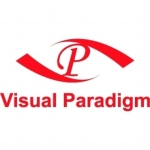I am using Sparx for narrow purposes. I am not doing any exports and am mostly designing in the Model pipe in ArchiMate.
My skills are not widespread.
ArchiMate is a good feature.
This is a useful tool for IT people who need to design their solution architecture.
There are other features that would be good for Architecture.
The interface is not as fancy as it is in some other software solutions.
Some of the features may be fine but I prefer a different type of interface.
Sometimes, it's difficult to read the text when you are presenting. The text is not very large or easy to read. It needs a zooming option.
The user interface could be better, it needs improvement.
This solution has some limitations from a business perspective.
In the next release, I would like to see multi-language support.
I have been using this solution for one year.
We are using version 15. Currently, the latest version is 16.
Technical support is fine.
I spoke with someone from Australia and they responded and tried to resolve the issues.
They spoke of the features and the plan to resolve the issues but didn't really acknowledge my suggestions on how to improve the user interface and make it better for the users.
Previously with another company, I was using ARIS.
Enterprise Architect is strong for them. UML is a very good solution for its purpose.
They were able to generate the codes. They were presenting me with the ability to transform BPMN to BPAL notations, convert, and then somehow enrich the BPAL notation to create an executable code from that. It's a useful tool for coding.
To my knowledge, we plan to continue the usage of this solution. It is the decision of the company and they have decided to continue using this product for specific purposes.
My recommendation for this product really depends on the purpose. I am more on the business side, and for business purposes, this product has some limitations.
The user experience and presenting it is challenging. This solution is not fancy, as in other products. However, it is a useful tool for IT people who need to design their solution architecture.
It depends on the purpose and orientation of the designer.
If the designer is IT, it's good because I have heard it from many people with an IT background that this is a kind of baseline that they need to use for UML design, and also for details and for architecture, is good.
This is also good for Enterprise Architecture because it has ArchiMate. While there are many good features, there are better ones available in the market.
I have only read about them, so I cannot accurately compare.
It is difficult to rate this product, as everything has a purpose. If for example, I was in IT, I would rate it a nine out of ten, but from the business side, for me, I would rate it a four out of ten.
As an overall general rating, I would rate this solution a six out of ten.


















I'd agree on stability. Performance for a large models can have some improvement, but that's something you can overcome by changing the structure of the model and by loading only necessary packages for a specific viewpoint.
And you pay a fraction of the price from the similar tools. That make ROI on that product very attractive.